How one B.C. woman ran 88 km across the Sunshine Coast in under 10 hours
Katherine Short tells her FKT story
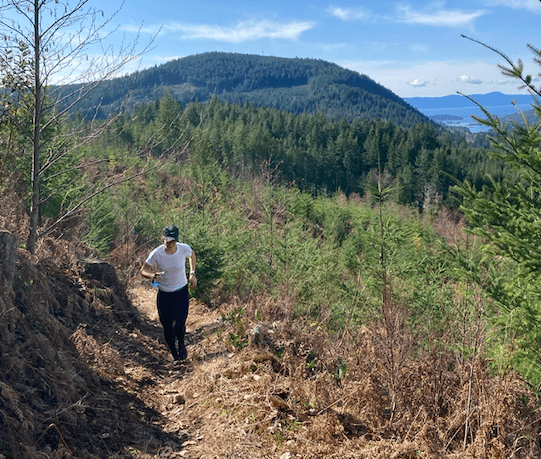 Photo by:
Laurel Booker
Photo by:
Laurel Booker
I’ve never been one to shy away from challenge. So when a good friend, Nick Duff, ran from Earls Cove to Langdale on B.C.’s Sunshine Coast in January 2020, I knew that this was my next goal, too.
The previous FKT on this route was 14 hours, 19 minutes, 20 seconds, set by Jeff Ritchie and Luke Till in 2019 (though it was never official). Duff’s FKT is nine hours, 29 minutes. My goal was to finish between 10 and 11 hours, and I was thrilled to finish in 9:52.
I’m fairly new to ultra distance running; last summer, in 2020, I set three FKTs: Mount Brunswick, Howe Sound Crest Trail North to South and Panorama Ridge Trail (two of those with Danielle O’Neill and Laurel Booker). But I’m no stranger to endurance sports. I grew up racing mountain bikes all over Canada, Europe and the U.S. Being brought up in Halfmoon Bay on the Sunshine Coast, I had a love of sport and the outdoors from a very young age. Trails have always held a gravitational pull for me, so regardless of what activity I am doing, it seems to always centre around the trails. I also grew up with incredibly supportive parents, who would always make sure I got to attend races and training camps.
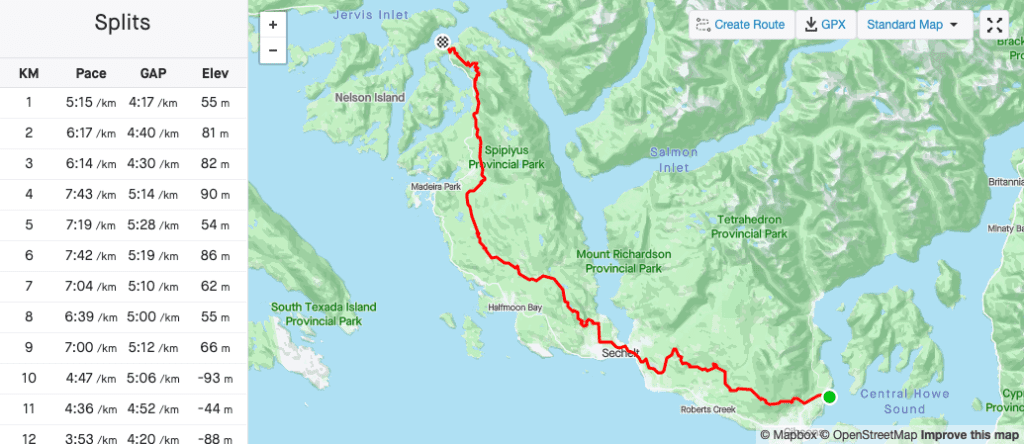
RELATED: Could this coastal half-marathon be B.C.’s best kept running secret?
I decided to run Ferry to Ferry from Langdale to Earls Cove, the opposite direction Nick ran in January. I did, however, follow the same route from point to point, so we could officiate the course and hopefully encourage others to challenge our times. I mapped the course using my Suunto Baro 9 GPS watch and pre-rode any intersections on my mountain bike to make sure I knew the route end to end. They say old habits die hard, and pre-riding and scoping course lines (i.e. routes) have always been an integral part of racing mountain bikes for me, so solidifying these lines to reaffirm this confidence was a must.
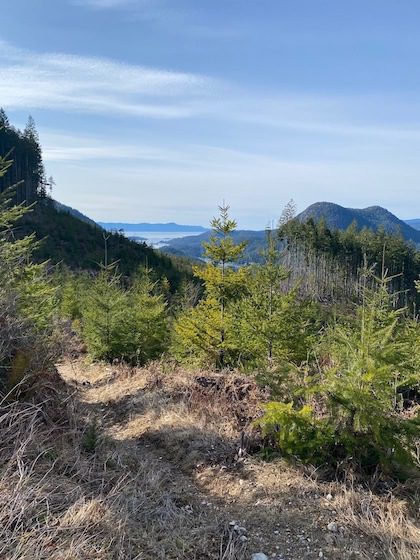
In my opinion, ultrarunning is 50 per cent physical and 50 per cent mental. The challenge of exercising for 10 hours straight not only stresses your physical body systems, but also challenges your mental state. Looking at lines, visualizing and preparing yourself for all possible situations is how you prepare your mind for these only slightly fathomable goals. I spent time every day visualizing crossing the finish line and passing through each section successfully. I started at 7:45 a.m. on March 16. I had zero doubt I could finish, I just wasn’t sure how long it would take me. (I finished just before 5:45 p.m. the same day.)
My strategy, going into the run, was to treat it like a 90-km race. I wanted to be as efficient as possible with nutrition, routes and ultimately, execution. This required an incredible amount of dedication from my friends and family. I planned 10 different feed stops along the route, with my parents and lifelong best friend, Sean, alternating stops. In each support vehicle there was food, water, a changes of clothes, changes of shoes, socks, gloves, hiking poles and maps – basically backups of anything I could possibly need.
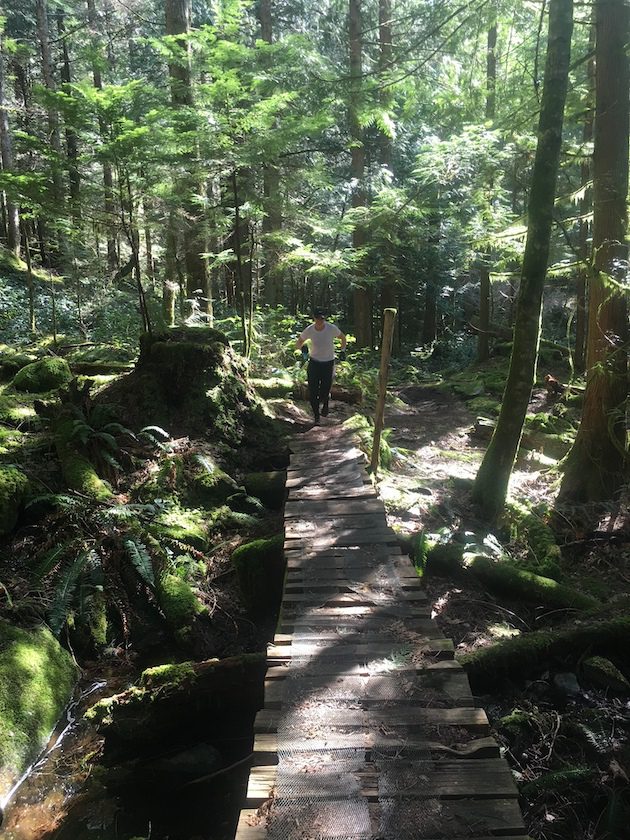
RELATED: 5 lessons road runners learn when they move to the trails
I had three incredible friends who met me on parts of the course to keep my spirits high. Nick Duff, who currently holds the FKT (fastest known time) across the Sunshine route, ran with me from kilometre 13 to 33. Local Sechelt doctor and training partner, Jack Bryson, kindly took a half day off from the office to support me and had his daughter shuttle him up logging roads to find me mid-day after his clinic shift, and ran from around kilometre 40 to 73. And Laurel Booker, one of my best friends and running partners from North Vancouver, ran with me from kilometre 61 to 91.
Nick was the first to join me in Roberts Creek. Meeting him gave me some very contagious, excited energy. Nick has been one of the most supportive running friends I have met. He has spent so much time going over lines and strategy for this and other projects with me, teaching me so much. Nick paced me perfectly through this section. Early on I was feeling very fast, so having him “check-myself before I wreck myself” was vital. He has, probably unwittingly, taught me everything I know about self-supported running projects. After watching him run and win the FKT on the Sunshine Coast Trail in Powell River last August, I took away more experience than I could have imagined.
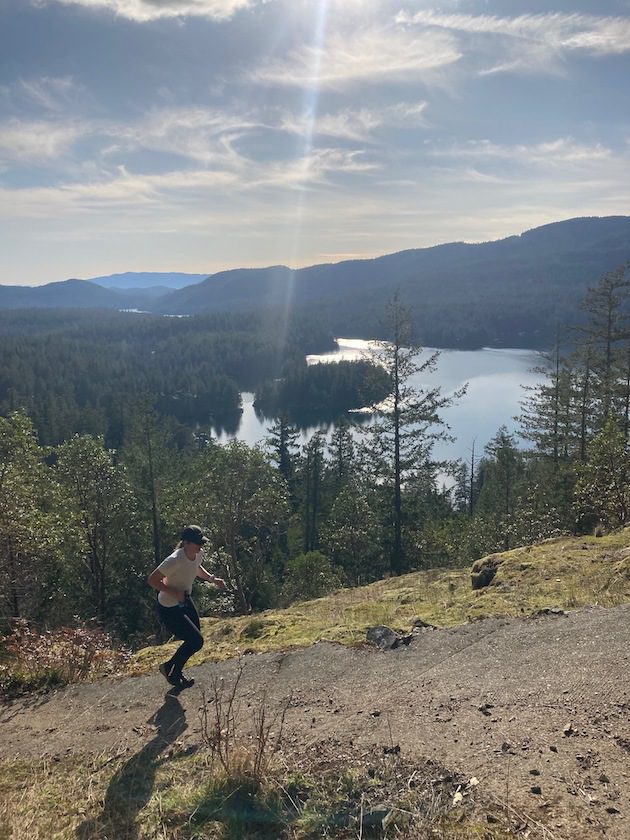
I was extremely grateful to have Jack and Laurel support me in the latter half of the run. Jack has always been an exceptional source to ask questions of, not only because he is an amazing physician, but also because he is a phenomenal athlete. Our training runs were like a live version of helpline chats – “should I take Tylenol or Advil in a long run? Can I run through bursitis in my heel? Is it OK to stay up for 30 hours and run?” You know, the basics. He left no calls unanswered while we ran, and casually bettered the lives of several Sunshine Coast patients while running with me. He also made sure I passed over every body of water with dry feet, and carried a ton of extra water to drink.
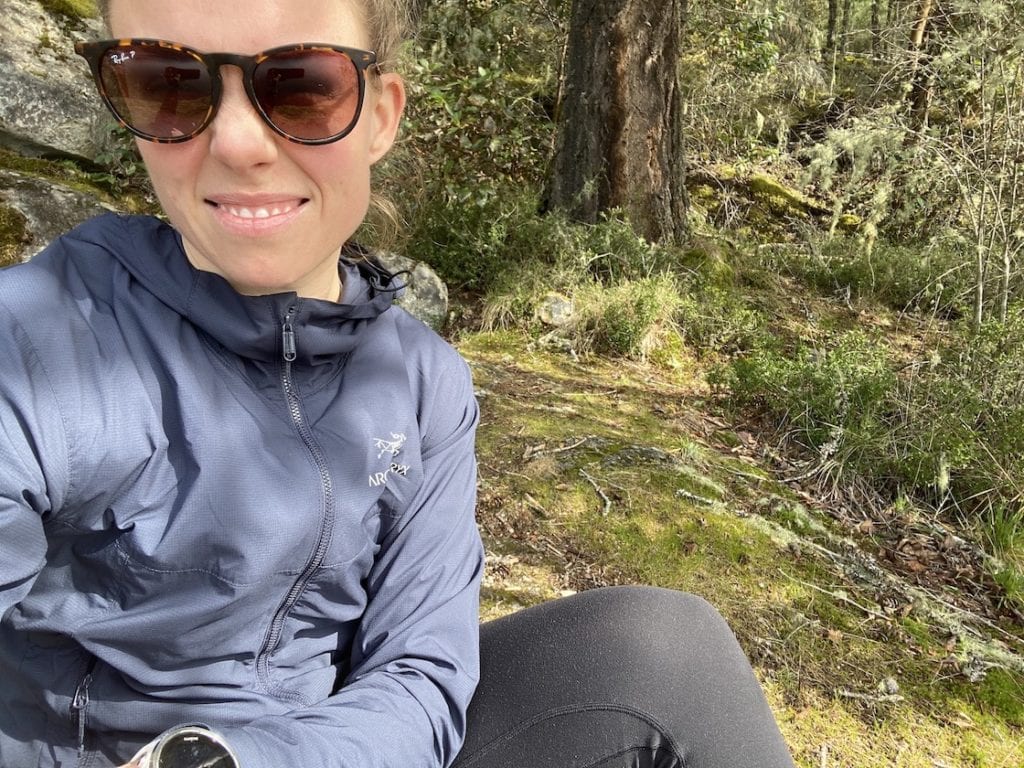
Laurel gave me some unforgettable advice in the last three kilometres of this journey, while we rounded Klein Lake: she reminded me of the common disassociation between the body and the mind. While my brain was trying to convince me that I was unable to finish this feat, she reminded me that my body could do it and I just needed to ignore the signals to stop, and eat more food. She reminded me that low blood sugar can cause your brain to play tricks on you; these hormonal imbalances desperately signal the body to stop. My brain was screaming stop, take a nap, lie down, but my body still had lots of leg power. Laurel hand-fed me candies and a mini can of Coke to keep me shuffling. She also pumped the tunes and made the last 15 km a running dance party. This made all the difference, and I will forever be grateful to have such a sweet and supportive friend.
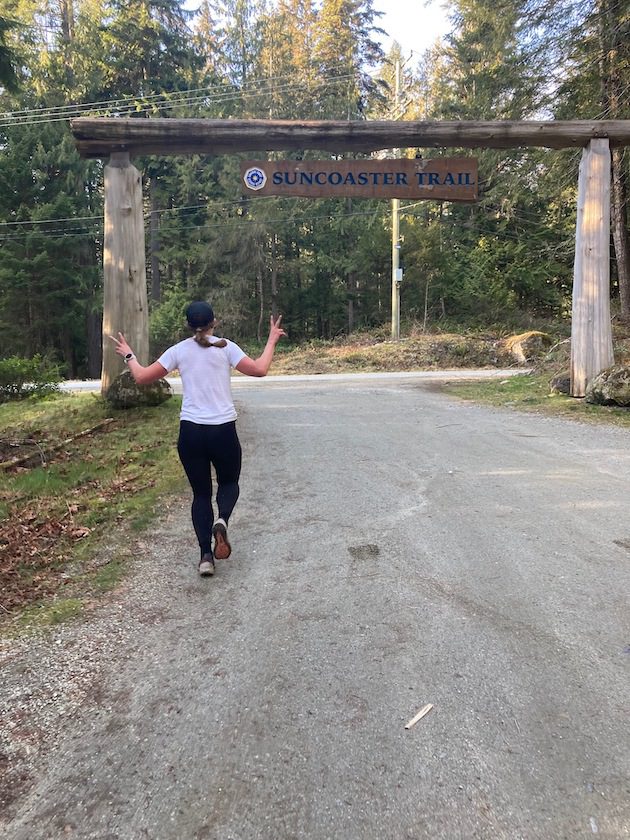
My parents were the backbone of this operation. My love for sport and being outside comes from them and their lifestyle. My dad woke up early with me, made me a fire, had the iced coffee ready to drink and reminded me that the only reason I should be doing this run was to have fun. My mom made countless muffins, cookies and sandwiches, and anything an endurance athlete could dream of.
RELATED: Debunking the most common endurance sport nutrition myths
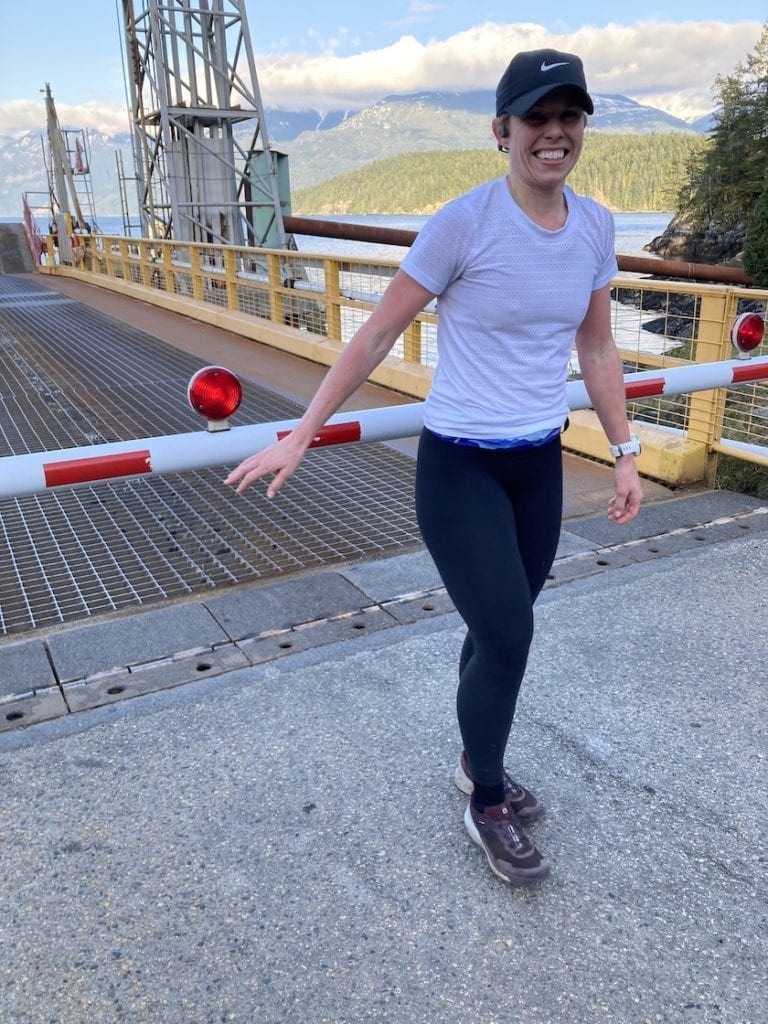
As for the big-picture preparation, for the past year and a half, I have been working with an incredible coach, Josh Vander-Wiele, who sends me my training program daily. My work week includes usually 12-14 hours of running (usually 90-140 km) as well as strength work and some cross-training on the bike. This work is custom-designed for me; we talk every day and adjust accordingly. I also have a day job as a registered massage therapist, running a business in Burnaby four days a week. This work allows me to combine passions perfectly.
Travelling from one end of the coast to the other gave me time to appreciate the unique landscape and natural beauty of the Sunshine Coast and feel truly grateful to have been brought up in such an amazing place. It was a memorable experience, one that will shape how my future long runs will look. I am excited and hopeful that other athletes will be inspired to push their own limits and challenge the time and strategy of crossing the Sunshine Coast as fast as they can.


